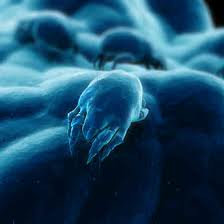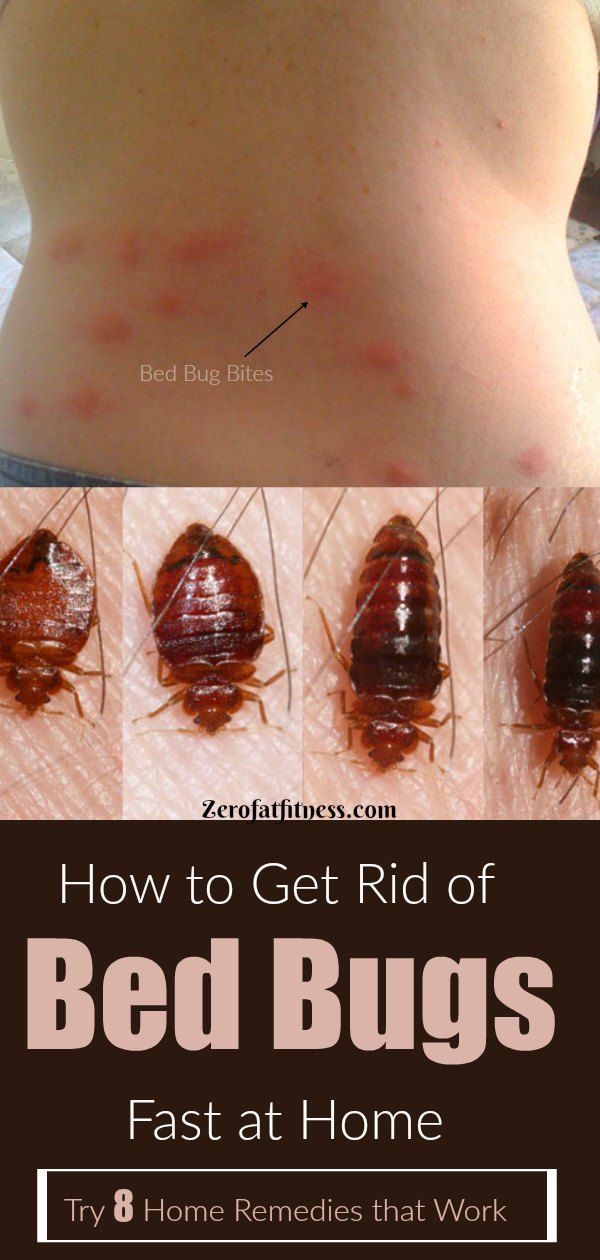
Bedbugs are very common insects in the family Cimicidae which feed primarily on human blood
Bedbug bites often produce rashes and skin lesions which can range from mild to very severe skin reactions. Bedbug bites can also cause skin discoloration ranging from minor spots to noticeable blisters.
Bedbug bites appear as a raised, flat red rash which is generally located on the face, neck or body area of the person. The color of the rash is variable depending on the individual and varies from light reds to browns. Bedbugs commonly feed during the night and do not usually bite until disturbed. Bedbug bites generally do not develop into larger blisters as other insects. However, bedbugs can produce tiny blood-filled eggs which can travel to humans and other animals if an infestation is not addressed quickly enough.
Although bedbugs don't produce visible bites, medical treatment for this insect is necessary as it is a serious health risk. These pests are responsible for transmitting various diseases and infectious agents from humans to other animals and from humans to animals. When bedbugs are discovered, the first thing to do is inspect your home thoroughly to look for any evidence of these insects.
Some of the most common signs that bedbugs are present include bedding, clothing, pillows, upholstery, mattresses, sheets, and furniture. If you see any of these signs of bedbugs, you should immediately discard any items and make sure they are cleaned and sanitized. It is also a good idea to hire a professional to clean any furnishings and clothing you have stored in your bedroom or laundry room. There is no need to purchase expensive ant-bacterial chemicals when a simple, inexpensive vacuum can effectively eliminate this insect.
Bed bugs usually feed at night and hide in a bed filled with a mattress. They prefer dark, warm, dry places and hide in unoccupied places such as pillows, mattresses, soft fabrics under sofas, behind a mattress, or even under wallpaper. Bed bugs love to live in poorly ventilated conditions. so you should check under the mattress for cracks and crevices to make sure there are no vents or places where bed bugs can hide.
It is very important not to wear tight clothes and clothes during sleep, so as not to bite the bugs. One way to get rid of bed bugs from your clothes or bedding is to wash your clothes or bedding in hot water and bleach. and wash things in hot water with bleach or by hand. You can also use a steam cleaner to kill bed bugs that are on your clothes or bedding. After rinsing with hot water, use disinfectant or detergent to kill bed bugs.
Another option for getting rid of bedbug bites is to take part of the affected object, wrap it in plastic and put it in the freezer. This will kill bedbugs, but you shouldn't put it in your mouth because freezing will kill the blood-producing eggs. Then place the wrap in the freezer overnight or in a freezer bag until the next morning. To remove the plastic wrap, simply open it, remove the paper or cardboard, and put it in a bag.
There are several bed bug remedies that you can use to treat these bed bugs. While many people choose to use hypoallergenic sprays on their bedding and mattresses to treat bedbugs, there are also more extreme methods you can try, such as applying insecticide to bedding and mattresses, washing the area with a hot hose, and air drying. , and burning the infected area.
Trigeminal neuralgia is a painful, sudden, deep facial pain in which the pain occurs in the area of the neck, head, jaw or jaws. It is often referred to as a burning or electric shock sensation in the mouth, cheeks, teeth, or even the jaw. It generally occurs in quick, unexpected episodes which can last for a few seconds to several minutes. In addition, there are several other conditions that share similar symptoms but are not classified as neurotic.
It is important to recognize what causes it. There are several possible causes and they include allergies, an imbalance of hormones, genetic reasons, nerve damage, infections or injuries to the neck area or surrounding areas. Each individual reacts differently to these stimuli. Some people respond well to certain medications, others have no response at all. However, some people are highly sensitive to certain treatments. This sensitivity can be caused by the amount or intensity of the treatment. Therefore, it is necessary to determine the cause of your neuralgia before seeking treatment.
It is also important to understand what triggers neurogia. It can be the slightest or the most intense sensation. It can be caused by touching, biting, sucking or chewing certain foods. This sensitivity can also be caused by cold or hot temperatures, light or loud noises and/or stress.
It is also important to determine if there are any underlying medical conditions which may contribute to neurogia. This can help you determine which medication will be effective in treating your condition. In addition, it can also give you an idea of how to prevent your condition from returning after you have gotten rid of the discomfort.

It may be helpful to consult with your doctor or allergist before undergoing any type of treatment to determine the type of treatment which is most appropriate. They can offer advice about which medications may be effective and which treatment may not be as effective. If you suspect that your condition may be related to any underlying medical condition, your doctor may be able to provide you with tests to determine whether your condition is truly caused by your immune system. functioning.
If your condition is considered to be neurogenic, your doctor may decide that no treatment is necessary, however, it is advisable to consult with your doctor about other treatment options. such as physical therapy. or acupuncture, to alleviate the pain, and prevent or reduce the discomfort. the recurrence of your symptoms.
In order to get rid of a fibroid, there are many treatments available but they do not all work for every woman
The most common treatment is surgery, however this will only be possible if the fibroids are large or if they have spread to other parts of the body.
If your fibroid is small and growing on its own then you may just need to make some lifestyle changes. The best way to do this is by finding out how it got to be that way in the first place.
You should try and keep yourself as active as possible but avoid taking painkillers which can cause further problems. Try to stay away from alcohol or drugs, it will only make your fibroid grow.
To help to keep the fibroids from growing and spreading you should have a regular basis of going to see your doctor. He or she will be able to tell you whether any treatment options may be suitable.
There is also the option of using hormone replacement therapy. This helps to balance the level of testosterone in the body as this is the hormone that causes fibroids to develop. This has been shown to be very effective in some women however others have found that the side effects make it a less than desirable option.
If all else fails and you find that the fibroid has grown into the pelvic area then you may need to seek out more invasive options. A hysterectomy will remove the fibroids and the uterus making it much easier to shrink them. will be too painful to remove them.
Some women also develop fibroids related to ovarian cancer. This is very serious and if it is discovered in the early stages then the treatment is often very successful. However, if it is left for too long then it may spread into other organs of the body.
A fibroid treatment can involve surgery, hormonal therapy, medication and even surgical removal. You should talk to your doctor about these options to make sure that your fibroid is suitable for one of these methods.
Before taking any of these treatments it is essential that you discuss them with your doctor. It is important that you are aware of the pros and cons of each one and that you are comfortable with both before you start.
You should be aware that there are various methods of fibroid treatment including: natural, surgery and surgical removal. Each method has its advantages and disadvantages.
Each one of these treatments will give you a completely different results. So you need to talk to your doctor about all of these options before making your final choice. This will save you time and money.